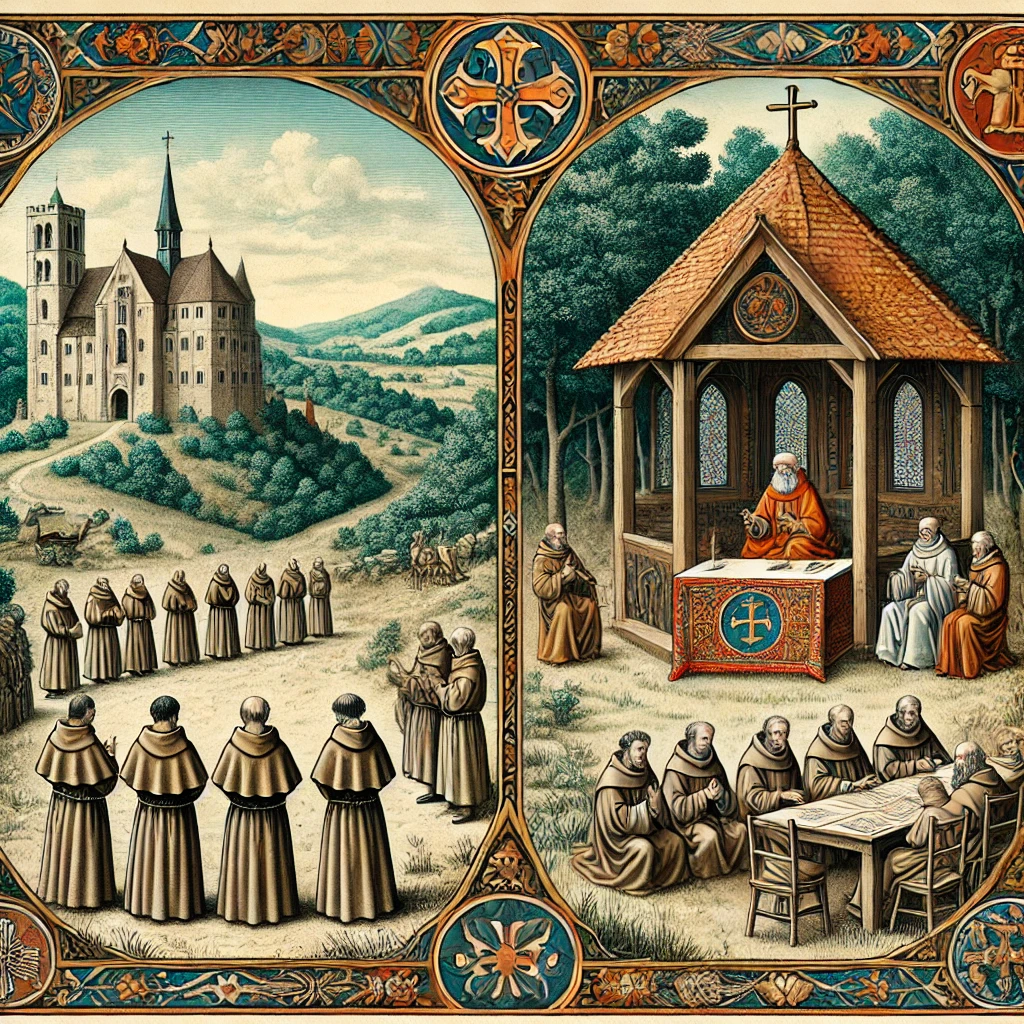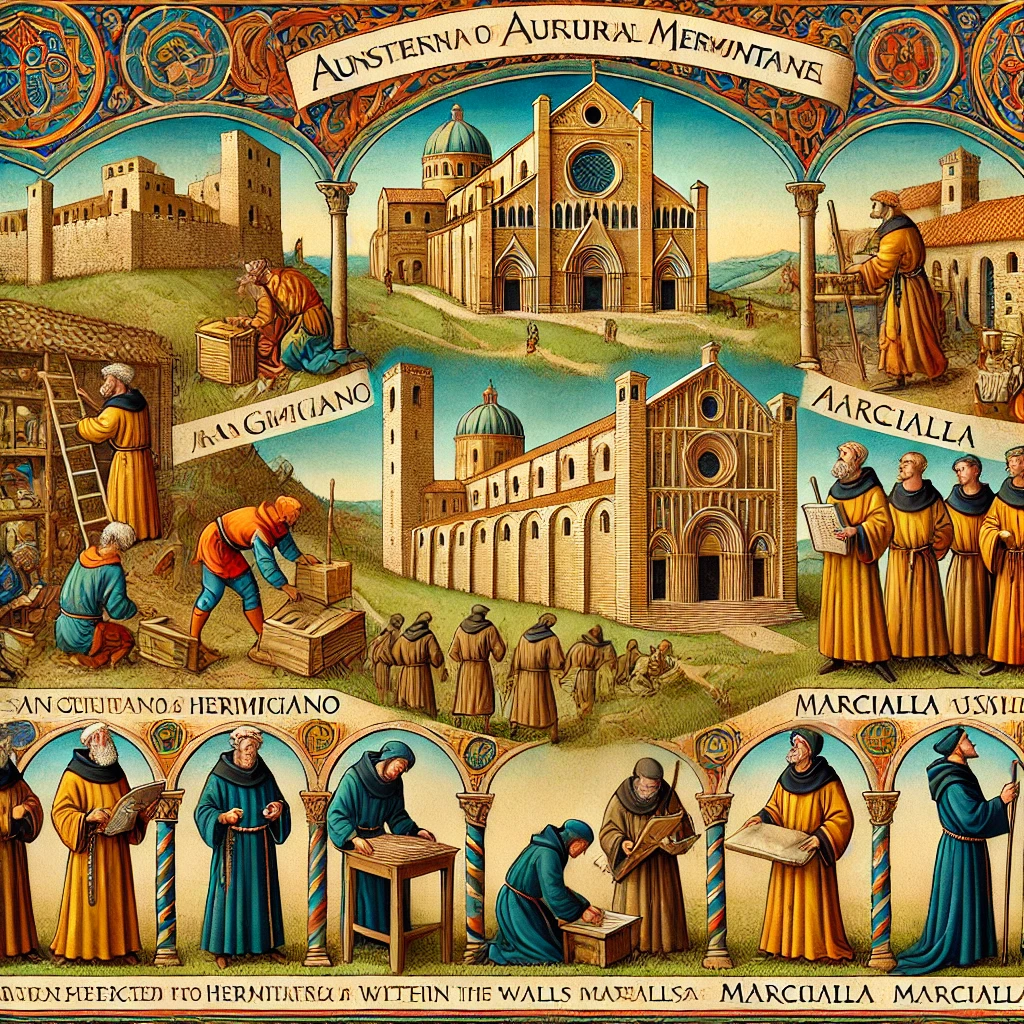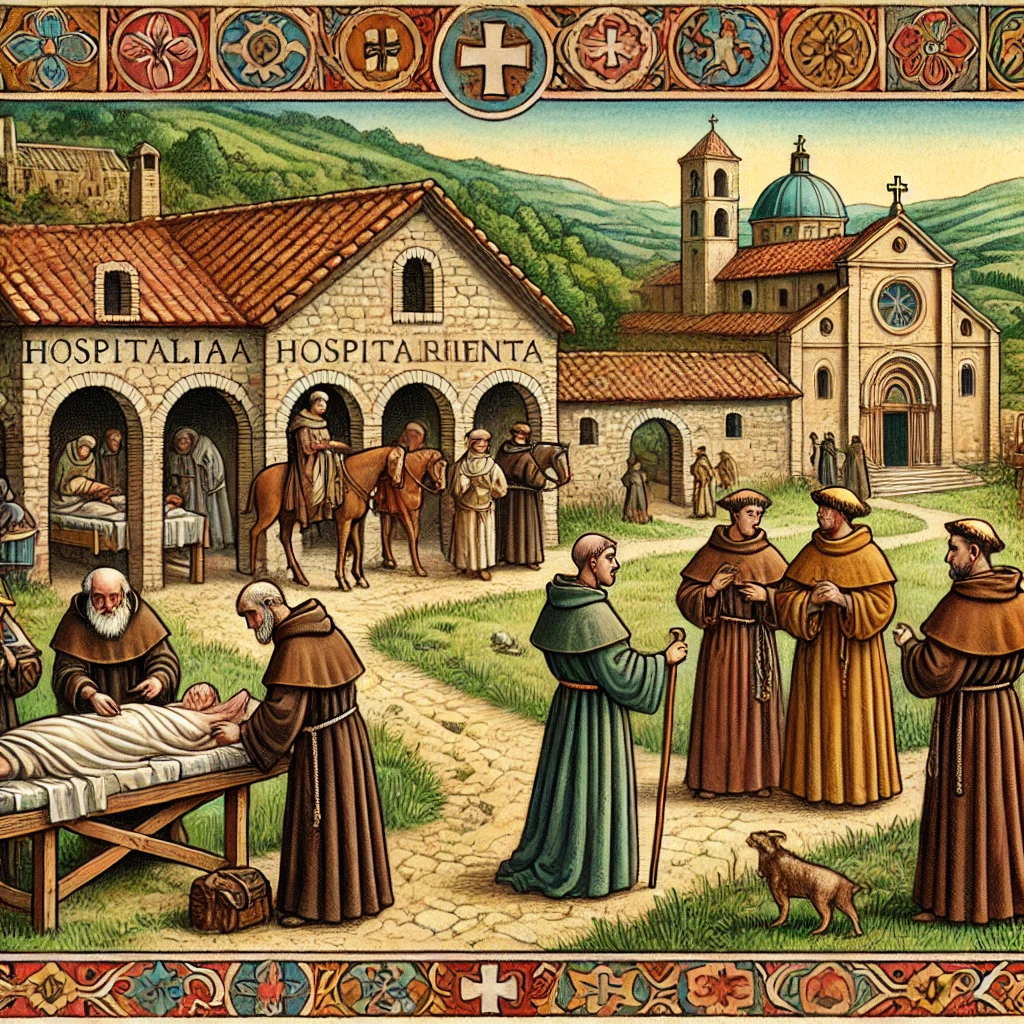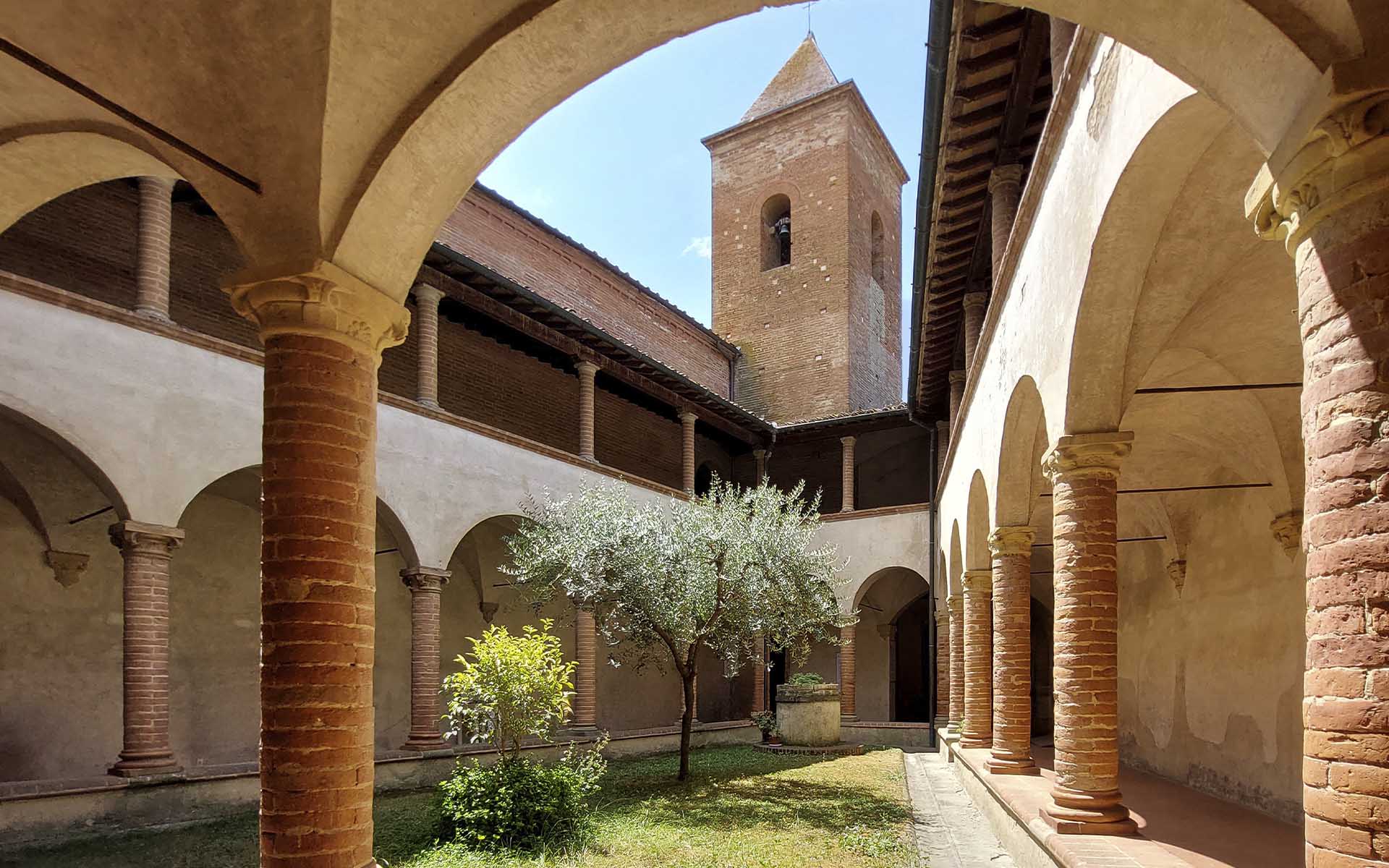The Convent
The history of the Augustinian Convent of Certaldo is rooted in a period of hermitage and spirituality, intertwined with the major religious and political events of the Middle Ages. As early as the 11th century, the countryside surrounding the Castle of Certaldo was home to hermit communities that would later transform into a religious order, leaving an indelible mark on the region. Their evolution unfolded through donations, papal bulls, and wartime events that shaped their destiny.
The following images were generated with the aid of artificial intelligence.
11th–13th Century
Hermits, the Rule of Saint Augustine, and the Order’s Foundation
Since the 11th century, the countryside around the Castle of Certaldo was home to small groups of hermits who, embracing the Augustinian rule, pursued their Itinerarium ad Deum through silence and solitude.
The first step towards the foundation of the Augustinian Order was sanctioned by the 4th Lateran Council of 1215, when Innocent III, in order to stem the multiplication of spontaneous lay movements outside the canonical rules, ordered them to gather in communities and around a prior father to support the clergy in their pastoral ministry to the rural population. The next step in this arrangement was the Incumbit nobis bull of 1244, with in which Pope Innocent IV exhorted all the hermits of Tuscia Annonaria ( the modern Northern Tuscany) to come together to form a single religious order, with the aim of evangelising the towns and their countryside, as had already happened with the Franciscans who, following in the footsteps of St Francis in Valdelsa between 1210 and 1220, founded their first monastery by readapting an existing hermitage at la Marca near Castelfiorentino.
From the union of these hermitic congregations, the Augustinian Order was born, sanctioned by the papal Vota Devotorum bull dated 23th March 1244, which allowed the monks to preach and hear confessions and to which other hermits from the Valdelsa area adhered in the following years, as a sign of obedience to what was sanctioned by Pope Alexander IV with the Magna Uno bull of 1256.


14th–17th Century
Foundations, Monastic Life, and Relocations
After switching from hermitage to apostolic activity, the Augustinians took shelter in more stable and secure locations, settling in San Gimignano, where the convent within the walls was erected following a donation received from the Mendicants in 1271, in Poggibonsi in the area of Santa Lucia, and then moved within the walls around 1301, and in Colle Valdelsa, where from the hermitage of Santa Maria Maddalena in Montevasoni the monks settled, erecting the convent of Sant’Agostino since 1306.
The first settlement of the Augustinians in the territory of Certaldo appears to have been at an oratory dedicated to the Virgin Mary with an adjoining small hospital in the flourishing market town of Marcialla, outside the walls of the castle of Pogni, received as a gift in 1390 from Masa di Tano, under the condition of building a church to be subject to diocesan control.
The convent, under the jurisdiction of the Florentine monks of Santo Spirito, thanks to lavish donations bestowed as a sign of gratitude for their charitable role in favour of the needy, was already completed around 1394 and, in its lacunose history, we only know that it was enlarged around 1550 due to the arrival of some Augustinians from Lecceto and that, in 1575, the Compagnia dell’Annunciazione was under its jurisdiction.
Following the suppression of the small convents that were not self-sufficient with alms, decreed by Innocent X in a papal bull of 15th October 1652, the few monks left Marcialla and moved to the near Augustinian convent of Certaldo, according to some sources existing in the parsonage of Santi Jacopo and Michele since 1372.
14th–18th Century
Landholding, Expansion, and Growth
More reliable sources attest that the monks acquired the church after 1401, a possession legitimised by Pope Gregory XII in 1408, thanks to the Giandonati family’s renunciation of their patronage, a generous act originating from the relationship the family had established with the Augustinians of Florence through their friend Giovanni Boccaccio, who donated his ‘Parva libreria’ to his spiritual father Martino da Signa, the future prior of the Florentine convent, in a testamentary legacy.
Its location and modest dimensions suggest that the convent has come down to the present day according to its ancient appearance, except for the demolition of the area in front of it that was once occupied by the cemetery, separated from the village by a wall where the entrance gate opened. We also know that works must have been carried out to repair the damage caused by the seizure of the castle by troops allied with the Pope in the war against the Medici in 1478, when the cemetery, entrance gate and church were devastated.
It is reasonable to believe that, when the monks took possession of the rectory, they started working on designing a comfortable space suitable for the sparse number of residents, laid out according to the plan adopted for convents: on the ground floor, the rooms where community life was conducted (refectory, chapter house, library, infirmary and kitchen) were distributed around the cloister; on the upper floor were the cells, including those occupied by the monks on their way from one coenoby to another.


Late 14th–18th Century
Monastic Hospitality, Pilgrimage Routes, and Suppression
In addition to the one near the Agliena bridge and the other subordinate to the Compagnia della Santissima Annunziata, since the end of the 14th century a hospitalia also belonged to the monks’ patronage, perhaps the one found in the village of Fabbrica, where religious and medical assistance was offered to the ever-increasing flow of pilgrims and travellers on their way along the Via Francigena at the bottom of the valley, which connected Poggibonsi to Castelfiorentino, the 21st stage of Sigeric, archbishop of Canterbury, on his way back home after his pilgrimage to Rome in 994.
The Augustinian monks remained in Certaldo until the suppression of their convent by motu proprio in 1783 by Grand Duke Peter Leopold of Lorraine, when the architectural complex with all its furnishings passed to the Archdiocese of Florence, to which it still belongs today.



